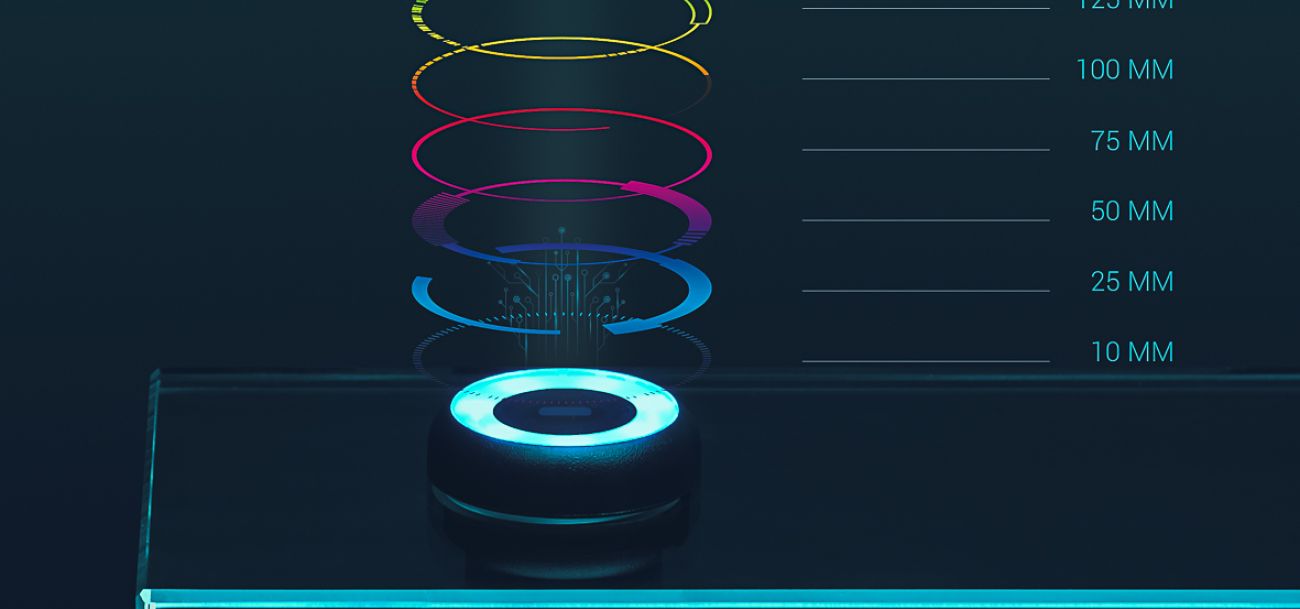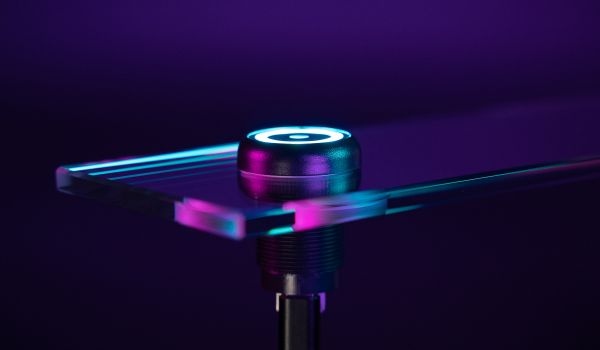Optical switch
Touch-free operations – this is possible with the optical switch from GETT.
The world of technology is subject to rapid changes and requires increasingly high standards for functions and usability – and operating technology is no exception. If touch operations in the form of individual and area capacitive sensors still dominated the market a few years ago, a new type of operating system is now the focus of attention – genuine non-touch operations.
The issue of hygiene and the need to adopt measures to minimize health risks have become more relevant, particularly since the pandemic. We are meeting this need with our optical switch and helping create safe and intuitive human/machine interaction.
The benefits of the optical switch at a glance
No mechanical wear and tear. No wear and tear are caused, as the operating technology does not require any direct mechanical action. The same applies to the switching process itself, as it is not mechanical either.
Absolutely hygienic. No contamination with dirt or germs is possible because there is no contact interaction with the operating element. Any spread of viruses, bacteria and germs on the switch’s surface is minimized too. You can then protect yourself and society from possible sicknesses.
Reliable activation. Regardless of whether you have your hands full, are wearing gloves or your hands are dirty, the state of the object to be reflected is irrelevant, as the sensor system is based on reflection and detection.

A detailed check of the optical switch
The switch is based on an optical proximity sensor. Compared to its rivals, optical barriers or two-dimensional infra-red fields, it has both a technical and an infrastructural advantage, as only one component is needed.
The switching process takes place in three phases: standby, proximity and activation. The relevant switch action is signaled on the switch’s surface using different levels of brightness and/or the color that you wish. They can be individually adapted using special configuration software. The distance for the thresholds can be configured in line with customers’ wishes too. They can be up to 150 mm. The actual switching process takes place 20 mm away from the switch’s surface.
An activation and switch-off time of 100 ms provides safe and precise switching operations. This prevents any activation by people walking past, for example. Are 100 ms too short or too long for you? Customers can adapt the switching times individually too.
The optical switch is a component for insertion.
The diameter of the switch’s head measures 30 mm. The actual function window in the middle of the surface measures 5 mm x 7 mm. It is surrounded by seven RGB-LEDs, which allow an individual color selection from 16.7 million colors.
The front panel of the switch’s surface is made of acrylic glass and its diameter measures 24.7 mm. It is printed on the rear. When adapting the print layout, it is essential to ensure that the function window is not affected.
The optical distance sensor is 36.8 mm long, including the switch’s head and thread, a M22x1 thread.
The switch uses 9 – 24 V DC power. The flat plug for the power supply is located at the bottom. It has four contact pins, two for the supply voltage and two potential-free contacts, acting as opening and closing switches.
The switch and its proximity sensor provide pre-defined thresholds in the standard option. The standard parameters can be easily adjusted at the customer’s PC using configuration software specially developed for the switch, for example:
- The colors of the LEDs,
- Brightness,
- Functions,
- Switching distances and
- Bounce, signal and recovery times
Would you like a real eye-catcher? No problem, because we can modify the shape and design of the optical switch.
It is necessary to drill a hole with a diameter of 22.3 mm to insert the switch in a supporting component without any torsion. The switch is affixed using a threaded nut, which is included in the delivery package. The complete insertion height is 43 mm.
Because opto- or photoMOS relays are used, it is easy to replace the mechanical switches, as the switch connections behave like normal contacts.
It is also possible to integrate the unit behind a closed surface to meet customers’ needs. It must be transparent so as not to impair its functions. The switch is provided with a complete, double-sided adhesive for the insertion option. Only the function window is excluded.
A combination of several optical switches on a PCB is also possible. The following use case illustrates what this might look like
Who benefits from the optical switch
- Variable illumination color
- Non-contact, contamination-free activation possible
- Operation e.g. also with gloves
- Very good EMC properties
- Detection of proximity
- Variable triggering distance
- Wipeable in functional mode (configurable)
- Equipment and apparatus engineering for all applications
- aerospace & aviation
- Industry & production facilities
- Hygienic sensitive areas
- Embedded Systems
- Outdoor areas like Building automation, security technology
- Outer dimensions: 7,3mm x Ø 30mm
- Housing: Plastic, anthracite
- Front screen: plastic, clear backside printed
- Mounting type: thread M22 x1
- Standard mounting dimension: Ø22,3mm with anti-rotation protection
- Housing head: round
- LED illumination colors:
Standby and approach = blue; trigger = green - Illumination type: ring
- 3 conditions: standby/approach/trigger; visualized by brightness and color
- distance threshold: approach = approx. 150mm; trigger of approx. 20mm
- Switching function: normally open contac















